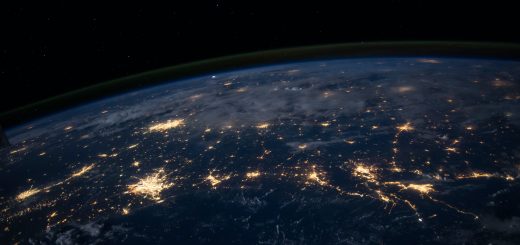Mysterious Illnesses in History: A Closer Look

Before diving in, please note: This post is for informational purposes only. If you’d like to know more about how we approach topics, feel free to check out our friendly Disclaimer Page.
Hey there, amazing readers! 🖐️ Just a quick note: yes, we know there are a lot of ads here. Trust us, we get it—it’s not the prettiest look, but they help us keep this blog alive and kicking. Those pesky little ads cover the costs of all the behind-the-scenes magic, from hosting and tech stuff to creating content we hope you’ll love.
We’re committed to delivering quality posts, and your support (even just sticking around despite the ads) means everything to us. So, bear with us, and thanks for helping us keep the good vibes rolling. Now, on to the fun stuff! 😉
TRANSLATE BUTTON AT THE END OF THE ARTICLE
A Quick Overview
Throughout history, mankind has faced a multitude of mysterious illnesses that have puzzled societies and captivated the imagination.
From plagues to curious afflictions, these medical enigmas have left their mark on cultures and landmarks.
They remind us that even in our quest for knowledge, some questions remain unanswered.
Let’s take a closer look at these puzzling ailments that have danced through time.
Unveiling the Enigma: What Are Mysterious Illnesses?
Mysterious illnesses are those conditions that baffle medical professionals, historians, and the public alike.
These ailments often exhibit unusual symptoms, puzzling origins, and perplexing outcomes.
They may sweep through populations, leaving devastation in their wake, yet their exact causes often elude experts.
Take, for instance, the symptoms.
They can range from physical manifestations like rashes and fevers to bizarre behaviors such as uncontrollable dancing or sudden bouts of lethargy.
As a result, these illnesses often lead to widespread panic and speculation.
People search for explanations, sometimes attributing them to supernatural forces or societal factors.
The fascination with these ailments isn’t just about their effects; it’s also about their place in history.
They reveal how societies respond to crises, how they adapt, and what they believe.
Every mysterious illness is a window into the fears and hopes of the people who lived through it.
Sometimes, these illnesses are linked to broader trends, such as changes in climate, diet, or even warfare.
The interplay between environment and health provides a rich backdrop for these historical narratives.
Furthermore, these stories remind us of our vulnerability as human beings.
They resonate through the ages, reminding us that we are still subject to the whims of nature and the unknown.
The Dance of Symptoms: How They Captivated Generations
The symptoms of mysterious illnesses often capture the imagination of those who read about them.
Imagine waking up one day to find your neighbor dancing uncontrollably in the street, seemingly possessed.
Or consider a sudden outbreak of a fever that leaves individuals bedridden for weeks, with no clear cause in sight.
Such descriptions can stir intrigue and fear.
Historically, chronicling these symptoms became a form of storytelling.
Medical professionals and laypeople alike shared tales of afflicted individuals, spreading rumors and theories like wildfire.
The recorded accounts shaped public perception and responses.
In some cases, people believed that these illnesses were divine punishments or the result of witchcraft.
The narratives surrounding these ailments often morphed into cautionary tales.
They warned about the dangers of neglecting health or turning a blind eye to the signs of illness.
Such stories created a shared cultural understanding, weaving a tapestry of fear, curiosity, and caution across generations.
Moreover, the dynamic nature of symptoms reflects the complexities of disease.
A mysterious illness may start with a mild headache but can escalate into severe complications.
Each symptom has its own story, contributing to the overall narrative of the illness.
This often leaves room for speculation and theories that can vary widely.
People long for explanations, especially in times of uncertainty.
Thus, the stories of mysterious illnesses become folklore, narrated at gatherings, shared in classrooms, and even depicted in art.
They resonate with us, adding layers to our understanding of health and disease.
Ancient Times: Plagues and Their Unexplained Causes
The annals of history are rife with accounts of plagues that swept through civilizations, leaving devastation in their wake.
The Black Death, which ravaged Europe in the 14th century, stands as one of the most infamous examples.
It killed millions, yet its exact origins remain a topic of debate even today.
Ancient societies often linked these plagues to the wrath of gods or other supernatural forces.
The idea that divine punishment caused illness was prevalent, leading to rituals and sacrifices aimed at appeasing the deities.
This belief system shaped public health responses, often prioritizing spiritual remedies over practical medical solutions.
Moreover, the lack of scientific understanding during ancient times exacerbated the spread of these plagues.
Without knowledge of germs, vectors, or hygiene, communities struggled to contain outbreaks.
Instead, they relied on superstition, which frequently led to scapegoating marginalized groups.
Interestingly, these plagues played a role in shaping societal structures.
The fear of contagion led to the isolation of infected individuals, giving birth to concepts like quarantine.
As communities adapted to these mysterious ailments, they developed early public health practices.
Even more intriguing is how these plagues influenced art and literature.
Works from this period often reflect the chaos and despair of a society grappling with the unknown.
They serve as poignant reminders of our shared human experience in the face of illness.
The Sweating Sickness: A Tudor Mystery to Explore
The Sweating Sickness, which emerged during the Tudor era in England, is another historical enigma that has left scholars scratching their heads.
First recorded in 1485, this mysterious illness struck the population with sudden intensity.
Victims would experience intense sweating, followed by severe headaches and a rapid decline in health.
Symptoms could escalate quickly, leading to death within hours.
The illness appeared in waves, disappearing as mysteriously as it had arrived.
Its sporadic outbreaks—often in conjunction with political upheaval—added to the intrigue.
Some attributed its recurrence to the whims of royal favor or changes in leadership.
Despite extensive records, the exact cause of the Sweating Sickness remains unclear.
Theories have ranged from environmental factors to dietary issues, yet no definitive answer has been established.
The illness’s abrupt nature and high fatality rate left both commoners and the elite in a state of panic.
The Tudor court, known for its political infighting, saw notable figures succumb to the illness, which heightened fear among the populace.
This fear often led to the spread of rumors and speculation, further complicating the discussion around the sickness.
This atmosphere of uncertainty fostered a rich tapestry of folklore surrounding the illness.
Interestingly, the Sweating Sickness was often dismissed in later historical narratives, overshadowed by more well-known plagues.
Yet, its fleeting nature and mysterious origins continue to intrigue historians and medical professionals today.
The Dancing Plague of 1518: A Bizarre Historical Incident
One of the most bizarre episodes in the history of mysterious illnesses is undoubtedly the Dancing Plague of 1518.
Residents of Strasbourg (then part of the Holy Roman Empire) were struck by an inexplicable compulsion to dance.
It started innocently enough, with one woman, Frau Troffea, breaking into a dance on a hot summer day.
Within days, dozens joined.
This wasn’t joyful dancing; it resembled a frenzied state, with dancers unable to stop.
Some collapsed from exhaustion, while others reportedly danced to their deaths.
Municipal authorities were baffled, and the city even hired musicians to keep the dancers going, hoping to end the episode through sheer entertainment.
Theories regarding the cause of this unusual phenomenon have ranged from mass hysteria to ergot poisoning—caused by a hallucinogenic mold found on damp rye.
Whatever the explanation, one thing is certain: this strange episode has fascinated historians for centuries.
What’s particularly engaging about the Dancing Plague is how it reflects societal pressures.
Strasbourg was experiencing significant social and economic upheaval.
The pressure to conform, combined with the stress of daily life, may have fueled this collective episode of madness.
The Dancing Plague serves as a reminder of the fragility of the human psyche.
It underscores how societal pressures and environmental factors can lead to strange behaviors and collective phenomena.
This event remains a vivid example of how history can surprise us in the most unexpected ways.
The Salem Witch Trials: Illnesses and Accusations Collide
The Salem Witch Trials of 1692 are often remembered for their frenzy of accusations and executions rather than their connection to mysterious illnesses.
However, the two are intricately linked.
A group of young girls in Salem Village began exhibiting strange behaviors—convulsions, fits, and inexplicable screams—leading to a witch hunt that would haunt the community.
Many historians believe these girls may have suffered from ergot poisoning, similar to theories surrounding the Dancing Plague.
The stress of societal expectations, combined with the fear of witchcraft, created a perfect storm for mass hysteria.
This context makes one ponder: what truly drove the community into such chaos?
As accusations spiraled, the notion of illness transformed into a weapon.
Individuals deemed “afflicted” could point fingers at others, leading to a cycle of blame and mistrust.
This dynamic underscores how mysterious illnesses can manipulate societal structures, leading to dire consequences.
The trials reflect the interplay between health, fear, and power.
Accusations of witchcraft were often directed at marginalized individuals, revealing deeper societal anxieties.
The scapegoating mechanism played a significant role, as a tangible illness became the vehicle for societal fears.
In hindsight, the Salem Witch Trials serve as a cautionary tale about the dangers of hysteria and the consequences of fear-based decision-making.
They remind us that illness, whether real or perceived, can disrupt the fabric of society in profound ways.
Mysterious Maladies: The Case of the French Pox
The French Pox, or syphilis, emerged in Europe in the late 15th century and quickly became a subject of mystery and stigma.
The disease spread rapidly and was accompanied by a variety of symptoms ranging from sores to severe neurological issues.
It prompted widespread fear and curiosity.
Initially, the origins of this illness were shrouded in speculation.
Some believed it was a punishment for immorality, while others thought it was a foreign contagion brought back from exploration.
The stigma surrounding the disease often led to social ostracism, complicating matters further.
The shifting narratives surrounding the French Pox highlight how society grapples with mysterious illnesses.
The interplay between personal experience and public perception reveals deep-seated fears about morality, health, and societal norms.
Changing attitudes over the centuries show how time can reshape understanding.
Treatment for syphilis was rudimentary at best.
Mercury and other toxic substances were the go-to remedies, leading to a cycle of harm and desperation.
Patients often resorted to folk remedies, opening a fascinating window into historical medical practices.
Interestingly, the French Pox also influenced art, literature, and culture.
It became a metaphor for societal decay, often depicted in works that addressed morality and ethics.
The disease’s evolution over time underscores the complexities of stigmatized illnesses in society.
The Sleeping Sickness: La Rêve in the 19th Century
La Rêve, or Sleeping Sickness, emerged in the late 19th century, particularly in parts of Africa.
This mysterious disease induced prolonged periods of sleepiness and lethargy, eventually leading to coma and death.
Its etiology was enigmatic, and it left many puzzled.
The disease was often linked to tsetse flies, leading to speculation about its transmission.
However, early responses were fraught with misunderstanding.
Health officials struggled to establish effective treatments or management strategies, leading to a sense of helplessness.
Interestingly, La Rêve also reflects colonial dynamics.
European powers often viewed outbreaks through a lens of exploitation and control.
The disease’s impact on local populations often went hand in hand with colonial narratives of superiority and intervention.
The name, Sleeping Sickness, evokes a haunting quality that captures the imagination.
It raises questions about the nature of illness and consciousness.
How does one reconcile the idea of sleep with suffering?
This paradox remains a compelling aspect of this mysterious ailment.
As the disease progressed, it sparked scientific inquiry, leading to advancements in understanding vector-borne diseases.
La Rêve served as a catalyst for the study of tropical medicine, enriching the broader field of epidemiology.
The Rise of Medical Mysteries: Exploring the Unknown
As we move into the 20th and 21st centuries, the nature of mysterious illnesses has evolved.
New diseases emerge, often shrouded in enigma.
From Ebola to COVID-19, the unpredictability of these illnesses captivates global attention, reflecting our ongoing struggle to understand health.
With advancements in technology and medicine, we are better equipped to investigate these mysteries.
Genetic research and advanced imaging techniques have transformed our approach to disease.
However, new challenges arise as we navigate the complexities of emerging pathogens.
The rise of social media and global travel complicates the narrative further.
Information spreads rapidly, leading to a mix of fact and fiction.
Misinformation can stoke fears, leading to stigmatization or panic over unknown illnesses.
Furthermore, these contemporary medical mysteries illuminate how interconnected we are.
The spread of diseases across borders emphasizes the importance of a global response.
As we share knowledge and resources, we cultivate a collective understanding of our health.
The allure of medical mysteries continues to inspire curiosity.
Each new discovery teaches us about ourselves and our environment.
It reminds us to remain vigilant and compassionate as we explore the intricacies of health and disease.
The Role of Folklore in Understanding Illnesses
Folklore provides a rich context for understanding mysterious illnesses.
Throughout history, societies have interpreted diseases through the lens of their cultural beliefs.
These narratives often reflect deeper anxieties about health, morality, and societal order.
For example, illnesses like tuberculosis were often romanticized in literature, portraying the afflicted as tragic figures.
This cultural narrative shaped public perceptions, influencing how society treated and understood the disease.
Moreover, folklore offers insights into how communities cope with uncertainty.
Mythical explanations often filled gaps in understanding, providing comfort in times of distress.
These stories fostered resilience, reminding individuals of their shared human experience.
Interestingly, folklore also serves as a cautionary tale.
Stories about mysterious illnesses can reinforce societal norms, shaping behaviors and responses.
They remind us of the consequences of neglecting health and well-being.
As we explore these narratives, we gain insight into the human psyche.
Our collective storytelling reflects our innate desire to make sense of the unknown.
In this respect, folklore becomes an essential tool for understanding the complexities of health.
Modern Science: Unraveling Historical Medical Mysteries
The advent of modern science has been a game-changer in the quest to understand mysterious illnesses.
Armed with advanced technology, researchers have delved into the past to uncover the origins and causes of historical ailments.
For instance, studies on ancient DNA have allowed scientists to trace the genetic makeup of pathogens responsible for plagues.
This work sheds light on how diseases spread and evolved over time, offering valuable lessons for modern medicine.
Additionally, interdisciplinary approaches have enriched our understanding.
Collaborations between historians, epidemiologists, and anthropologists have led to nuanced insights into how societies respond to health crises.
This holistic view fosters a deeper appreciation for the complexity of illness.
I find it fascinating how modern science transforms our understanding of these historical enigmas.
Each discovery illuminates a facet of the past, reminding us that our fight against illness is ongoing.
We stand on the shoulders of those who came before us, learning from their experiences.
Moreover, as we confront new health challenges, the lessons of history remain relevant.
Understanding the interconnectedness of societies and health is crucial as we navigate the complexities of our modern world.
In this ever-evolving landscape, our understanding of mysterious illnesses continues to grow.
Each breakthrough in science and technology paves the way for a brighter future, filled with hope and knowledge.
Conclusion: What We Learn from History’s Illnesses
Reflecting on the history of mysterious illnesses, it’s clear that these enigmas offer more than just tales of woe.
They provide valuable lessons about resilience, empathy, and the human experience.
Each story reveals how societies grapple with fear and uncertainty, shaping their responses to health crises.
As we face new challenges in our contemporary world, we can draw inspiration from the past.
The narratives of mysterious ailments remind us of our shared humanity.
They encourage us to remain vigilant and compassionate, understanding that health is a collective responsibility.
Moreover, the interplay of folklore, science, and societal response underscores the importance of a holistic approach to health.
By learning from history, we cultivate a deeper understanding of ourselves and our environment.
In the end, history’s mysterious illnesses serve as reminders of our vulnerability and strength.
They challenge us to confront the unknown with curiosity and courage, fostering a sense of connection among us all.
So, let’s continue to explore these mysteries with open minds and hearts, for in doing so, we honor the journey of humanity through the ages.

The Enlightenment Journey is a remarkable collection of writings authored by a distinguished group of experts in the fields of spirituality, new age, and esoteric knowledge.
This anthology features a diverse assembly of well-experienced authors who bring their profound insights and credible perspectives to the forefront.
Each contributor possesses a wealth of knowledge and wisdom, making them authorities in their respective domains.
Together, they offer readers a transformative journey into the realms of spiritual growth, self-discovery, and esoteric enlightenment.
The Enlightenment Journey is a testament to the collective expertise of these luminaries, providing readers with a rich tapestry of ideas and information to illuminate their spiritual path.
Our Diverse Expertise 🌟
While our primary focus is on spirituality and esotericism, we are equally passionate about exploring a wide range of other topics and niches 🌍📚. Our experienced team is dedicated to delivering high-quality, informative content across various subjects ✨.
To ensure we provide the most accurate and valuable insights, we collaborate with trusted experts in their respective domains 🧑🏫👩🏫. This allows us to offer well-rounded perspectives and knowledge to our readers.
Our blog originally focused on spirituality and metaphysics, but we’ve since expanded to cover a wide range of niches. Don’t worry—we continue to publish a lot of articles on spirituality! Frequently visit our blog to explore our diverse content and stay tuned for more insightful reads.







